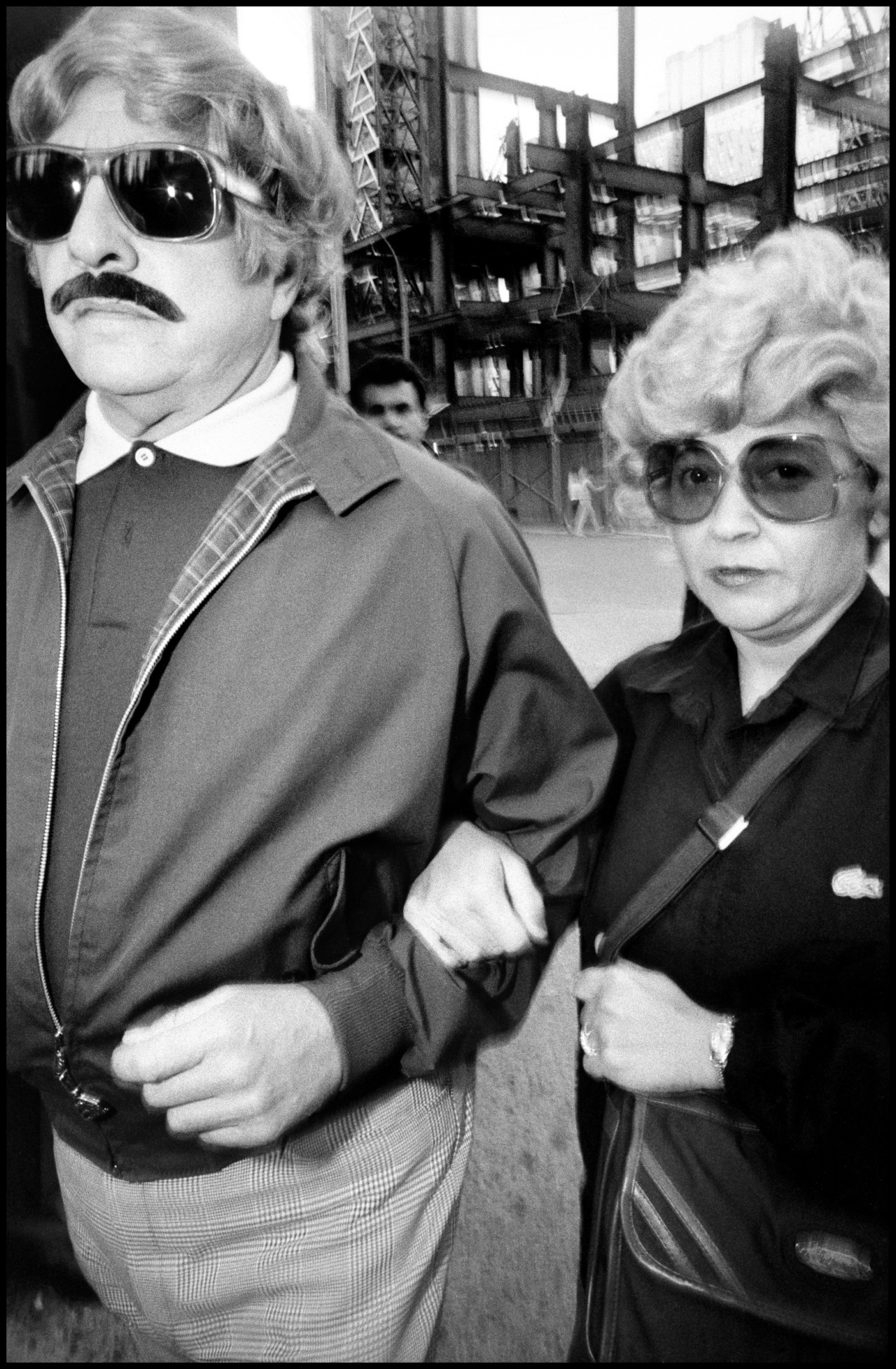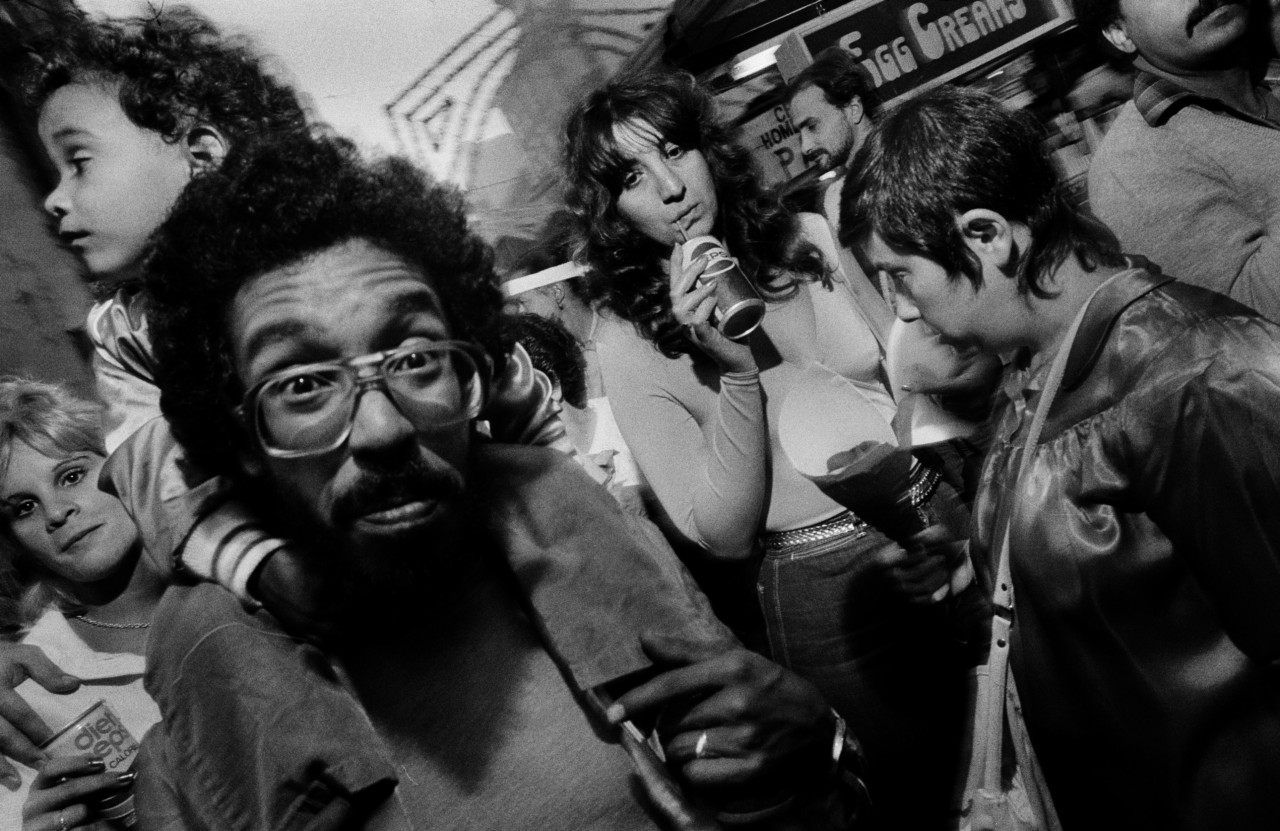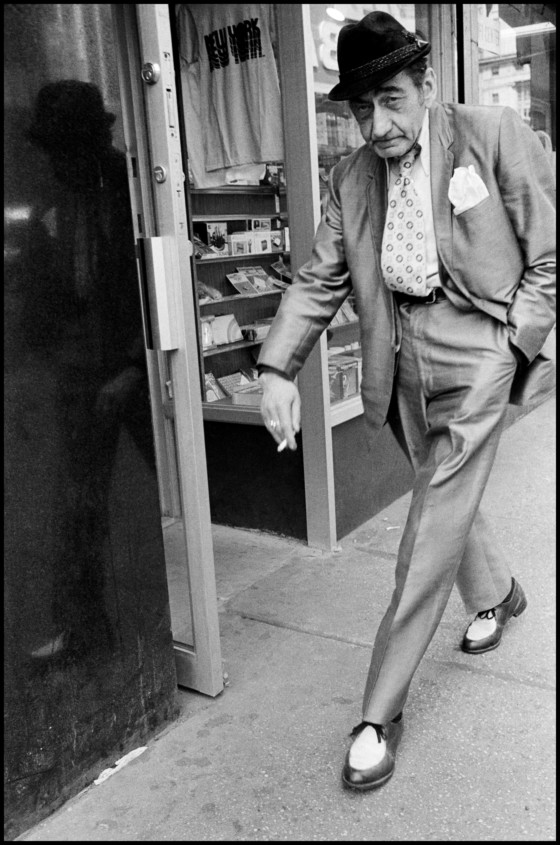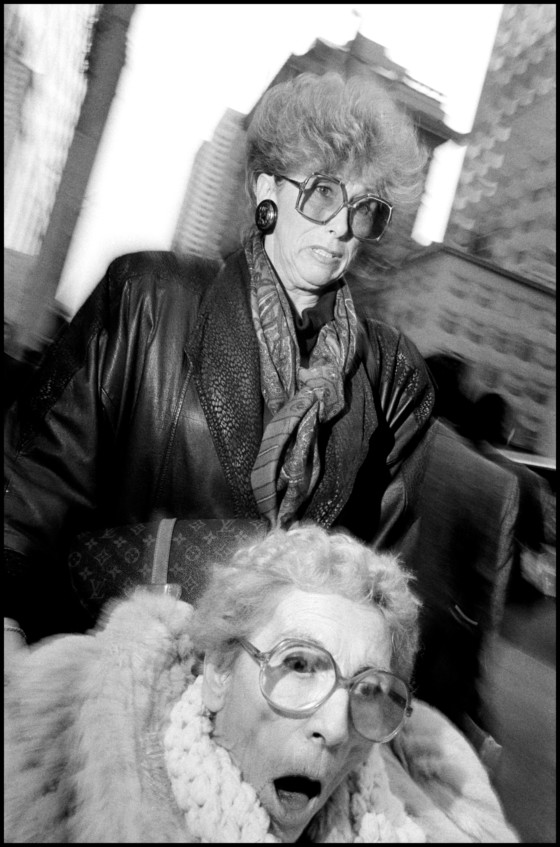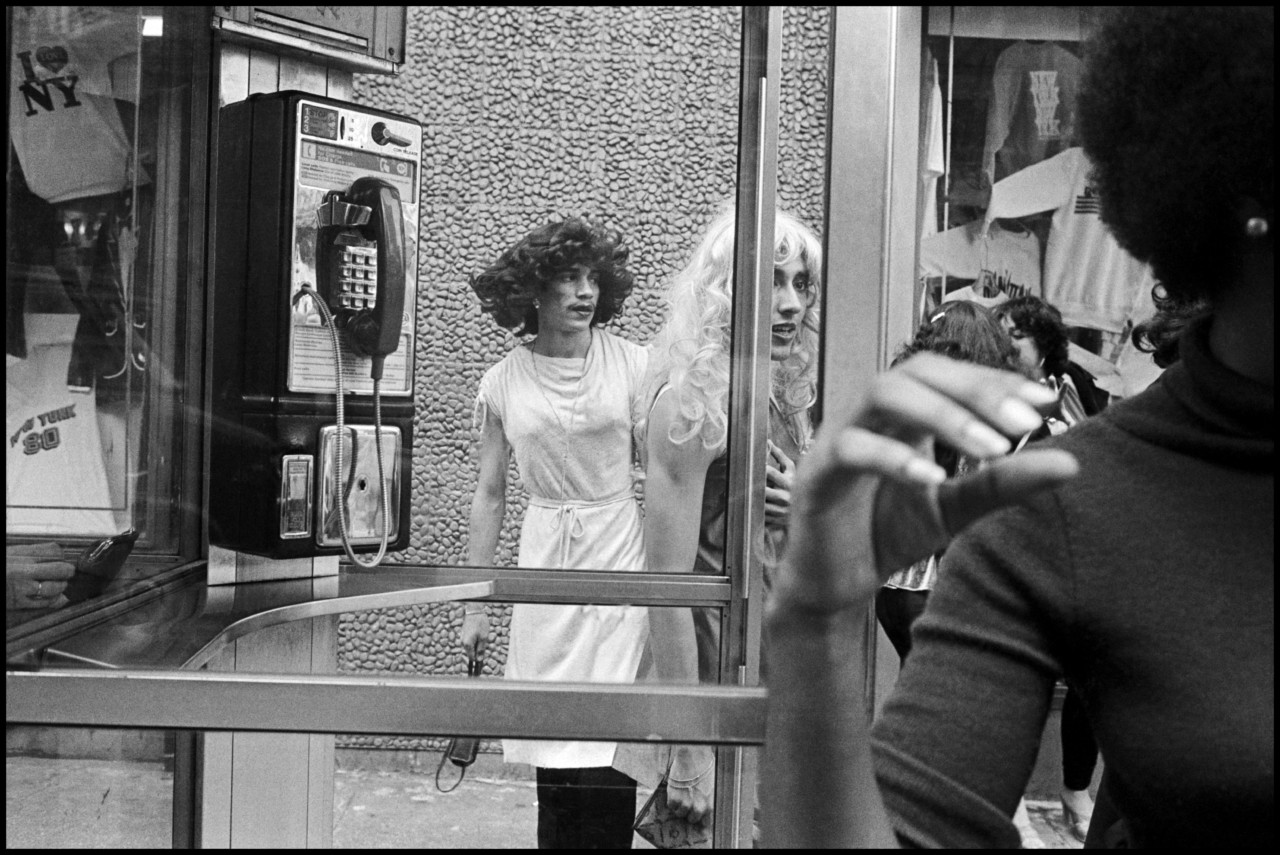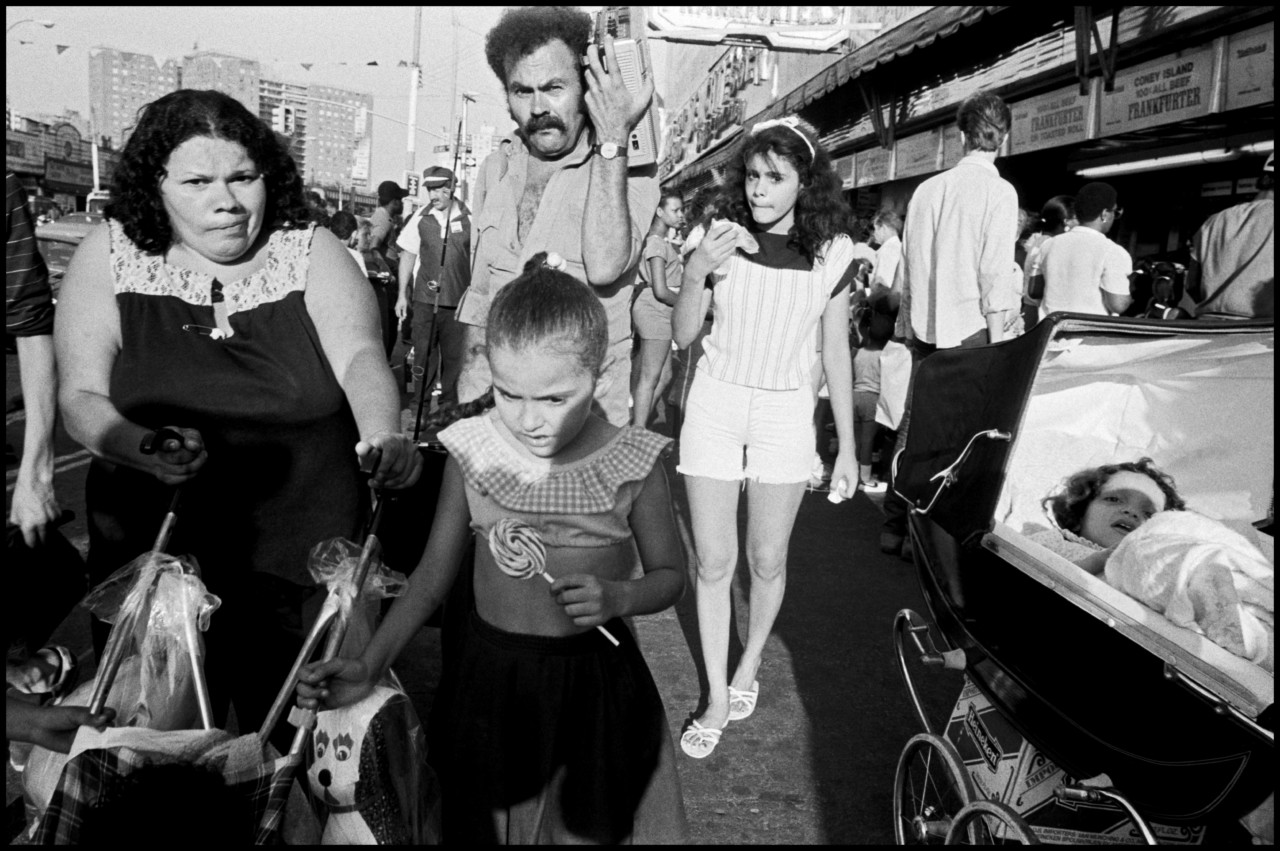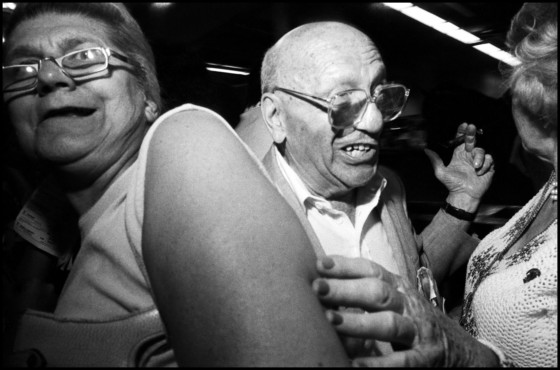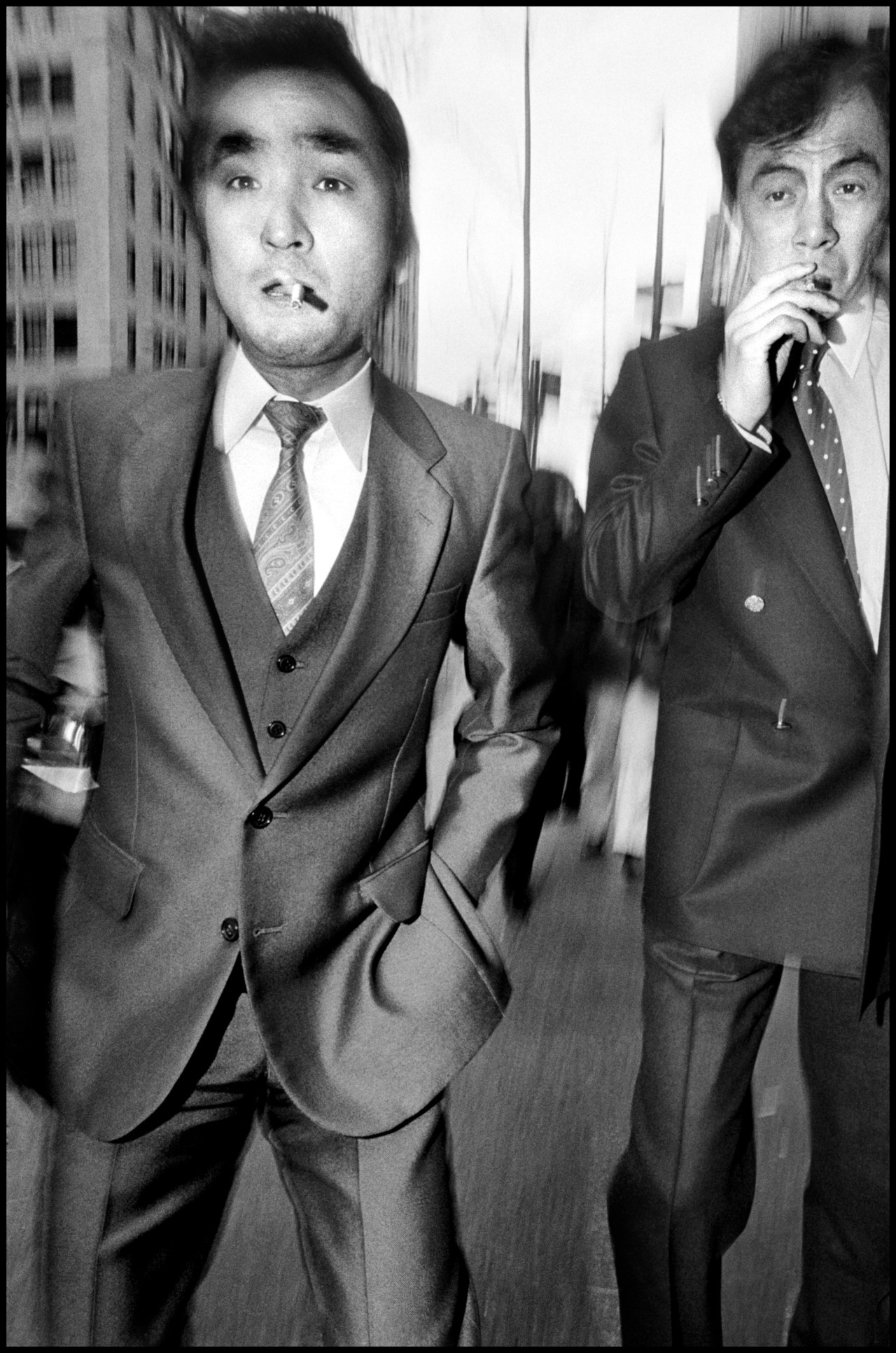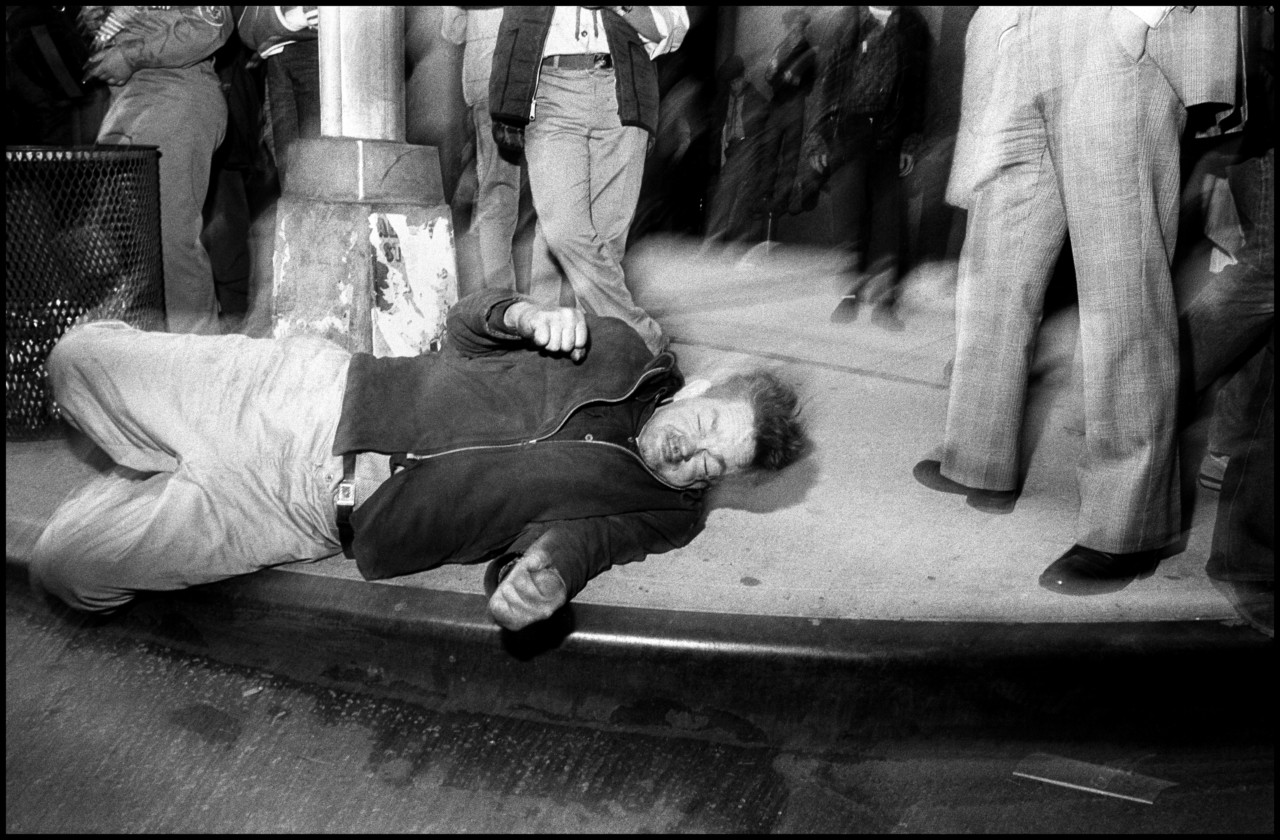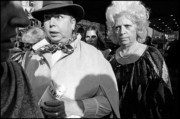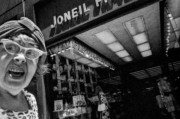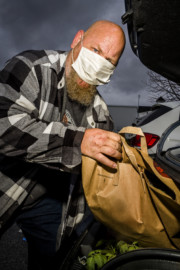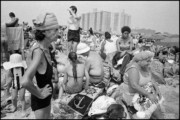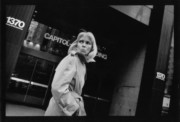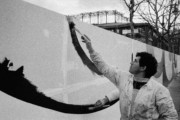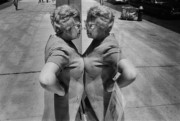“I am the pace of New York” – The Rewards and Pitfalls of Photographing the Familiar
Bruce Gilden discusses his 1992 monograph, Facing New York, and considers the inherent advantages of working in one’s hometown – especially if that hometown is New York City
Brought up in Brooklyn, Bruce Gilden made many of his earlier projects in New York – including his work on Coney Island and the book project Facing New York which was recently republished by Dewi Lewis. The book’s first edition, Gilden’s first large-scale release, served almost as a primer on what came to be his characteristic approach to street photography: high intensity, close-quarters portraits, often illuminated by flash and capturing the assorted residents of New York, from the Fifth Avenue city workers to vacationing families and a cast of varyingly intriguing characters.
Here, Gilden reflects on the book, the challenges of photographing in the street, and on the advantages one has in making work once familiar with – and more importantly attuned to – a place.
Signed copies of Facing New York are now available on the Magnum Shop, here.
Gilden is one of seven Magnum photographers who lead the Art of Street Photography online education course. You can find out more about the course, here.
You have photographed in New York – off and on – for most of your life. How did you approach making an edit of your work for the book?
As ever, I tried to pick the photos that are best! But that said, with any book you can’t just put together all the hits. A book needs peaks and valleys. You try to make something that has a flow. Between the strongest pictures are the images that work to accentuate or emphasize them.
What’s really interesting to me is that at the time of the ‘92 edition, and in spite of the above, I had left out a couple of extremely strong pictures. Don’t ask me how… They are now included in this new edition.
Even though all the pictures in the book are technically untitled, I call the first of the new ones ‘Best Street’. It’s of a guy, with a kid on his shoulders, and everyone’s crossing the frame. There’s a big Egg Cream sign in the background. That’s typically New York, it’s a drink with milk, chocolate syrup and seltzer. It’s delicious, you’d die for it when you were a kid. A nice chocolate egg cream with Fox’s U-Bet syrup. That picture, I don’t know why it wasn’t in the book, it was a favorite of mine at the time, and it is still in the top two or three New York photos I have ever taken.
The second picture added to the new edition I call ‘Fake Moustache’, again – that’s not a real title. It’s of a couple walking, and it looks like if you grabbed at the guy’s face there’d be a machine underneath there. He’s got sunglasses on, a fake moustache, what looks like a wig – it looks like he’s in the witness protection program or something…
"The ones I love I have always loved. It’s very rare that a picture I thought highly of falls off the radar for me. But of course, in spite of that, every now and then some slip through"
- Bruce Gilden
Looking back on your older work, do you ever find that images you once loved have lost something with time? Or is that not an issue you come up against?
Let’s face it: what’s good is good. The first time I met Sophie, I asked her to marry me, and we are together 28 years now. So, what I am saying is that I am a pretty fast reader of things. The ones I love I have always loved. It’s very rare that a picture I thought highly of falls off the radar for me. But of course, in spite of that, every now and then some slip through.
What’s most interesting to me, looking back at these earlier works of mine made in the city – whether looking at Facing New York, or my other forthcoming book – Lost and Found – is that you can see more of New York, of the city, in my earlier photographs. You can tell that I was going to more varied areas back then.
I guess that when I was younger I was feeling my way around more, in those earlier days, but over time one becomes conditioned to go to areas where you feel you have the chance to make better pictures in the same amount of time.
"As you get deeper into a place, as you get to know the areas where things happen and the best times to catch them – you will start to make better work"
- Bruce Gilden
Was that also to do with certain areas having more interesting subjects, those ‘characters’ we so often see in your work?
Firstly – it’s not that some areas have more characters, or that some other have fewer necessarily. It’s just that some places just have more people, period. The more crowded it is the more opportunity you have to take a good picture.
Take Fifth Avenue, for example. I don’t think it’s that there were more characters on Fifth Avenue than, say, on Delancey Street. In fact, like-for-like Delancey Street probably had more interesting subjects back then, but trying to get a good picture on Delancey Street would have taken me more time.
Another thing to remember when talking about ‘interesting subjects’ is that a lot of the people in my pictures may well be fairly unremarkable people. They may in fact be totally average. But you can make a photo that is strong in spite of that. This is partly an issue with using flash. Flash offers a transformation – it can make things look better: it illuminates the main subject more clearly and makes the image more dramatic.
How important is taking the time to become comfortable in a place – when making photographs that will stand up?
Sometimes you go to certain places and instantly feel, ‘This isn’t for me’. That happens. But in any place where you feel that you can make work, and with any project that’s long-term – in the beginning you will take out your camera, take a few pictures, and you might well say, ‘Oh, that’s pretty good!’ But, usually by the end of your time in that place – when you look back over all of the work, those aren’t going to be the pictures that stand up as the best.
Now, you may take a few of the earlier ones and keep them, they may work for your book or exhibition or whatever alongside others, but you will have probably gone way beyond that work by the time you are comfortable and understand a place.
What changes in terms of making work, with that understanding of a place?
As you get deeper into a place, as you get to know the areas where things happen and the best times to catch them – you will start to make better work. That’s been the case for me whether it was my work made in Haiti, Japan, or indeed, New York.
Unless you are a fool, then there is something pulling you to make work, to take photographs – why else would you be doing it? That’s as true for me whether it’s a year in Japan or for God-knows how many years working in New York. And with knowledge and experience – and naturally you have to have some talent – you will make better pictures as you move on in a place, right up until you reach a saturation point.
Eventually there comes a point when you’ve used a place all up. That even happened to me in New York. You can still hire me and I can do a really good job making photos there, but for personal work, I did become tired of it. New York has also changed as a place. It’s not the same city or the same people. I always tell students this – don’t say you’ll do something next year, do it now! If you don’t , then you and the place might change.
Do you think that New York has been the place that has offered you the most, as a result of that familiarity and knowledge of the place?
No, I don’t think so. I have ‘X amount’ of good images from Haiti. ‘X amount’ of good images from japan. And ‘X amount’ from New York. Actually, if we really look at it in terms of how long I have worked in these places compared to the great images I have got, I don’t think New York represents the strongest place for me to work in. Having said that… what would the drop-off in reward and interest be if I had worked for longer in places that weren’t New York…?
Has New York offered a deeper reserve of potential images to be made by you, in part as a result of your feel for, and understanding of, the place?
I am of the firm belief that in spite of all the amazing material here, New York is one of the hardest places to be a street photographer, OK?
A lot of people come here, and they do their New York pictures. Most of the time – from the photos – you can tell they aren’t from New York. It just doesn’t look like New York in the way that say my, or Gary Winogrand’s photos might. That’s because we know it, we live here, we are part of it.
Even the best photographers in the word, often you can sense that they are not fully attuned to a place they are working. And that’s certainly true for lots of work made in New York. Look, I’m not from the photo police! I’m not saying other people’s work made here can’t be good, but I am saying I have an advantage as a New Yorker, and that taking the time, making the effort to understand a place, is essential.
People could of course take that argument and say, ‘Well you went and made work in Japan, or Haiti…’ And there’s a little to that: The first day I went to Haiti I took photos of women with buckets on their heads, because I had never seen people carrying water in buckets on their heads! But then I was like, what the fuck am I doing? That stopped right away.
I realised I was capturing clichés and I addressed that. So, I am not saying that a non-native New Yorker can’t make good work here either from an outsider’s perspective, perhaps actively engaging with that perspective or how the place makes them feel, or that you can’t come here and make good work here if your personality actually fits the place and you take the time. If you get under the skin of this city you can do it. Working in any city, or country, it’s about spending the time, concentrating, focusing and understanding. Also, it’s about how talented a photographer you are.
Because of my personal style of working and my being quite perceptive I go to certain places and work there long enough to get a feel for a place, to understand it.
"When you think of ‘New York’ you don’t think of a person sat in a dark room reading a book, do you? It’s a dynamic place. And my photos are dynamic"
- Bruce Gilden
When you say your ‘style of working’, how do you mean, in terms of this question of location and familiarity?
I photograph myself, I photograph my father – who is extremely important to me in my photography – wherever I go. No matter where I am, I take that with me. I do of course respond to the place that I am in, as it is the place that gives me the material, but wherever I am and whatever that material – it’s still going to be a Bruce Gilden photograph.
My spirit fits New York very well. People may say, ‘Well, it fits only a certain ‘sort’ of New York’, and that’s true, but when you think of ‘New York’ you don’t think of a person sat in a dark room reading a book, do you? It’s a dynamic place. And my photos are dynamic.
That’s the strength in my pictures. Why repeat what’s been done? You take what’s been done in the past and add to it. I can’t out-Cartier-Bresson Cartier-Bresson, but I can be the best Bruce Gilden. The strength to my work in New York is that I am a born-and-bred New Yorker. My upbringing, my dynamic, my energy – I am the pace of New York. The city’s pace is my pace.






